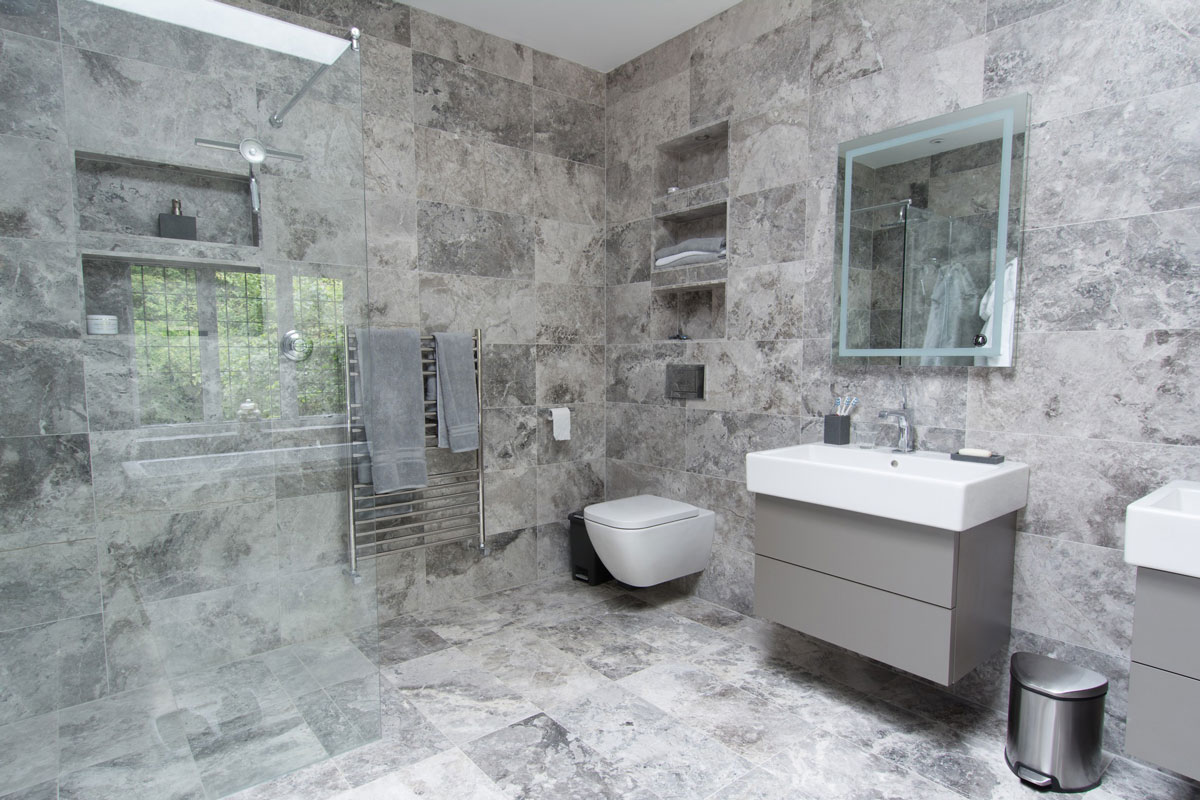
A key consideration when planning a new bathroom or kitchen is which materials you will use. These high traffic areas require surfaces that are hard-wearing and durable, but are also stylish and able to stay looking smart and up-to-date for a long time.
That’s why you can’t go wrong with classic materials and finishes, like Travertine. With an innate beauty, this natural stone has been used for centuries on façades, flooring, columns and walls – and therefore comes with a tried and tested track record.
About Travertine
Travertine is part of the limestone family and comes from quarries in Italy and Turkey. There are many notable buildings, such as the Sacré-Cœur Basilica in Paris, that have used this historic material extensively.
It comes in a wide variety of colours, from light ivory and beige tones through to red-brown and golden hues, which is down to how much iron is present in the stone. You can select many different finishes, too – from smooth and polished for a sleek and contemporary finish to a more rustic and tumbled appearance which has an aged, antique look.
Uses of Travertine
Used the world over to create beautiful flooring and walls in a variety of bathroom tiles, kitchen tiles, worktops and splashbacks, it is also a favourite for landscape gardeners who use it outdoors for paths and patios, due to its strength and natural beauty.
Advantages of Travertine
With so many different finishes available, whatever your style there are Travertine tiles for you.
When polished it closely resembles marble – and as we know marble tiles are a hot trend in interior design now – so using Travertine can be a great way to capture this chic look.
Easier to cut and shape than some other stones and porcelain, it’s a good choice for awkward or irregular spaces where different shaped tiles are needed. It is more environmentally friendly to use this natural material over porcelain, too, as it doesn’t go through the same manufacturing process.
Caring for Travertine
With care it can last a lifetime, but as it is a porous material it can require a little extra TLC to keep it looking good. Unless it’s highly polished, which is more resistant to staining, you should seal it annually with a natural stone sealant and you are always advised to blot up any spills immediately, especially lemon juice, vinegar, oil or coffee.
Protect surfaces by using placemats, coasters and trivets to guard against heat damage and always use a suitable cleaner that is safe (not bleach or general household cleaners) – it should be PH neutral and safe for natural stone.
A more rustic, matt finish will be pitted and have indentations, so a regular hoover is a great way to keep on top of dust and dirt deposits.
About Travertine Tiles UK
If you are investing in a beautiful new fitted kitchen or stylish bathroom suite and want to add stunning surfaces for a unique look, do consider Travertine tiles in your home – especially if you prefer a beautiful, natural look over man made materials. Specialising in a variety of natural stone tiles since 1997, Travertine Tiles UK can help with any project, big or small and cater for bespoke size requirements, too, able to supply direct from the manufacturers all over the world.
Featured Post




People still use travertine? It looks nice and noticed it on hotels rooms!